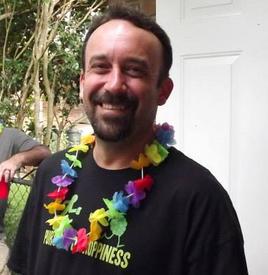bf%

heidi5k
Posts: 181 Member
What is the best way to determine bf% using measurements?
I find a huge variance btwn army, navy, marine and ymca algorithms...
What is most accurate?
Thanks!
I find a huge variance btwn army, navy, marine and ymca algorithms...
What is most accurate?
Thanks!
0
Replies
-
Bump! I'd like to know too:)0
-
I'd think anything that uses caliper measurements would be the most accurate... I use calculators that usually include a good number of different measurements to try and get the most accurate number otherwise.
But I have no idea what is the most accurate in all honestly, these are just my opinions.0 -
There are literally scores of different methods used to determine body fat %. They are all optimized for different groups of people, gender, activity levels, age ranges, etc.
Even the supposed gold standard of body fat % testing, the hydrostatic method can be off by 3.8% of body weight once air in lungs, etc is accounted for.
Heck, I once had a trainer measure me, sat down for 30 minutes, and the same trainer measured me again and my body fat had changed 2%!
If you can't find a method targeted for your age, gender, and activity level, then just pick one and stick with it. The important thing is how it trends. Keep it out of single digits and you'll be ok 0
0 -
DEXA scans are the most accurate, but that's expensive. Doing skinfold measurements with calipers is the best everyday method, but be sure the same person takes your measurements every time. BF% scales and online calculators using circumference measurements aren't very reliable.0
-
I do hydro testing. Dexa is more accurate from what I hear. Calipers are legit if done properly.
The scales with the hand held devices are abysmal.
whatever method you use, use it to track patterns rather than as an end all be all (though I treat my hydro that way because I can do it only every six months or so)0 -
Over the past few months, my scales have consistently measured my body fat in the range of 16-17.5% and I look nothing like the photo for that percentage that was posted, so I don't think the photos are very accurate, really...0
-
I think the measurements ones must be pretty inaccurate. Recently some of my measurements have not changed or have changed by very little but I can feel I've lost fat and gained muscle. For example, it wants waist measurement but my waist could not get much smaller now - the area below my belly button is where the fat is and that is what is changing but the calculators don't take that into account. All depends where you store the fat I guess.
I've used a scale at the gym where you hold the handles and it tells you your percentage - are they accurate? It said my body fat was about 20% but realistically I'd say it's a bit higher than that!0 -
http://www.tanita.eu/products/catagory/detail/home-use-body-composition-monitors/44-bc-543-glass-body-composition-monitor.html
this is the scale I have. My whole family uses it and it gives very realistic percentages for everyone.0 -
Over the past few months, my scales have consistently measured my body fat in the range of 16-17.5% and I look nothing like the photo for that percentage that was posted, so I don't think the photos are very accurate, really...
Your scales are probably calibrated wrong, or wildly off. Electric impedance devices are not accurate at all, even on average.0 -
Electric impedance devices are not accurate at all, even on average.
They can be if you figure out how to use them. I messed with the timing, hydration and how I hold my Omron to match my BodPod results. Once I got that all figured out, it has resulted in consistent data that matches my BodPod data.
Tom
Take a look at the orange dots vs. red dots: 0
0 -
I had a difference of 13% using different online tape measurement calculators, from 13% to 26%. Then I tried a bia device at a health fair, and finally I got a set of calipers. I like the calipers best, for frequent use.0
-
All home made measurements are fairly inaccurate. I just recommend comparing to a chart like this.A lot quicker and faster....
Only if one can see oneself objectively, which most of us can't. I really couldn't look at that set of pictures and decide what I look most like. I know what I want to be, and what I'm afraid I am, but not what I really am.0
This discussion has been closed.
Categories
- All Categories
- 1.4M Health, Wellness and Goals
- 397K Introduce Yourself
- 44.2K Getting Started
- 260.9K Health and Weight Loss
- 176.3K Food and Nutrition
- 47.6K Recipes
- 232.8K Fitness and Exercise
- 456 Sleep, Mindfulness and Overall Wellness
- 6.5K Goal: Maintaining Weight
- 8.7K Goal: Gaining Weight and Body Building
- 153.3K Motivation and Support
- 8.3K Challenges
- 1.3K Debate Club
- 96.5K Chit-Chat
- 2.6K Fun and Games
- 4.6K MyFitnessPal Information
- 16 News and Announcements
- 18 MyFitnessPal Academy
- 1.4K Feature Suggestions and Ideas
- 3.1K MyFitnessPal Tech Support Questions









